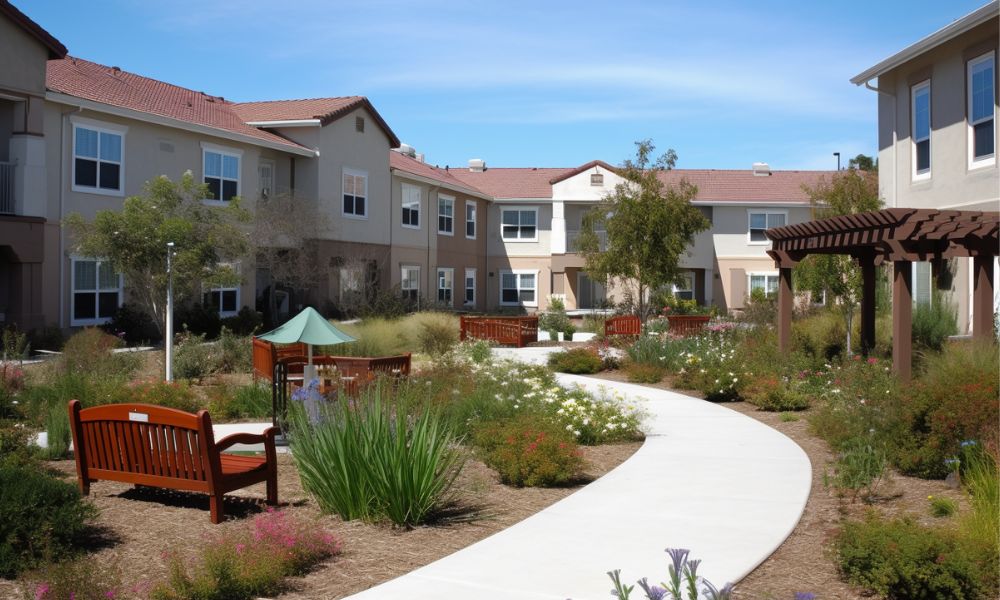The Enchantment of Mediterranean Courtyard Gardens
The hidden world of Mediterranean courtyard gardens offers a timeless sanctuary of tranquility that seamlessly blends architectural beauty with natural splendor. These intimate outdoor spaces have captivated homeowners for centuries with their unique ability to create private retreats even in bustling urban environments. Drawing inspiration from Spanish, Italian, Greek, and Moroccan traditions, these gardens transform forgotten spaces into vibrant extensions of the home. Their growing popularity stems from a contemporary desire for connecting with nature in meaningful, personalized ways while honoring cultural heritage through thoughtful design elements.

The Rich Heritage of Courtyard Gardens
Mediterranean courtyard gardens trace their origins back thousands of years, evolving from practical necessities into artistic expressions of culture and lifestyle. Ancient Roman domus designs featured the central atrium and peristyle garden, creating protected outdoor spaces that offered both privacy and natural cooling. These architectural innovations spread throughout the Mediterranean basin, adapting to local conditions and cultural preferences. In Spain, the Moorish influence introduced intricate water features and geometric patterns, while Italian Renaissance gardens emphasized symmetry and classical proportions. Greek courtyards traditionally featured stone paving with potted plantings, creating versatile spaces for daily living. These historical designs share common elements: centralized outdoor rooms, water features, container plantings, and strong architectural frameworks that create immersive environments despite limited space.
Architectural Elements That Define Mediterranean Courtyards
The defining characteristic of Mediterranean courtyard gardens is their intimate enclosure, typically surrounded on three or four sides by the home or surrounding walls. This architectural embrace creates a microclimate that protects plants from harsh elements while capturing sunlight in winter months. Traditional materials include terracotta tiles, natural stone, wrought iron, weathered wood, and textured stucco in warm earth tones that patina beautifully with age. Water features serve as both visual focal points and natural cooling systems—from simple wall fountains to more elaborate reflecting pools that amplify light and create soothing acoustics. Covered walkways, pergolas and loggias blur the boundaries between indoors and outdoors, offering shade during hot summer days while maintaining the continuous flow between living spaces. Arched doorways frame views between different garden rooms, creating a sense of discovery as one moves through the space. These architectural elements provide the essential structure upon which the garden’s plantings and decorative elements build, creating a seamless extension of the home’s interior design language.
Plant Selection for Authentic Mediterranean Atmosphere
The plant palette of Mediterranean courtyard gardens reflects adaptation to the region’s distinctive climate patterns of hot, dry summers and mild, wet winters. Drought-tolerant species with silvery or gray-green foliage dominate these landscapes, offering texture and movement while requiring minimal maintenance. Cypress trees create vertical accents, while olive trees provide graceful silhouettes and symbolic significance. Citrus trees in decorative containers contribute both ornamental value and practical harvests, perfuming the air with their blossoms. Fragrant herbs including lavender, rosemary, sage, and thyme spill from containers or informal borders, engaging multiple senses and providing culinary ingredients. Climbing vines such as bougainvillea, jasmine, and wisteria soften architectural elements while providing seasonal color displays. These gardens emphasize textural contrast over constant blooms, though flowering plants like oleander, plumbago, and agapanthus provide recurring color throughout growing seasons. The strategic layering of these plant selections creates year-round visual interest while maintaining the garden’s authentic Mediterranean character. Container plantings allow for flexibility, enabling seasonal adjustments and experimental combinations while preserving the essential architectural framework of the space.
Creating Atmosphere Through Light, Sound, and Texture
The magic of Mediterranean courtyard gardens extends beyond plant selection to encompass sensory experiences that transform these spaces into immersive retreats. Light plays a crucial role, with carefully positioned garden elements capturing and reflecting sunlight throughout the day. Morning light filtering through pergolas creates dappled patterns, while evening illumination from lanterns, string lights, and candles extends the garden’s usability into nighttime hours. Water features contribute gentle acoustic dimensions that mask urban noise while creating psychological cooling effects. Wind chimes, rustling grasses, and strategically placed bells add further auditory layers that respond to natural air movement. Textural contrasts between smooth stonework, rough walls, and varied plant foliage create visual and tactile richness. Traditional pottery, mosaic work, and handcrafted tiles incorporate cultural patterns and colors that weather beautifully with age. Outdoor textiles in weather-resistant fabrics add comfort while referencing regional textile traditions. These sensory elements work together to create spaces that feel simultaneously stimulating and soothing, offering an emotional experience beyond mere visual appeal. The thoughtful incorporation of these atmospheric details transforms simple outdoor areas into transportive spaces that evoke the essence of Mediterranean living.
Practical Implementation in Contemporary American Homes
Adapting Mediterranean courtyard principles to American properties requires thoughtful translation rather than direct replication. For homes without existing architectural enclosure, creating definition through strategic fencing, garden walls, or even carefully positioned container gardens can establish the necessary sense of enclosure. Climate considerations vary dramatically across American regions, requiring adjustments to plant selections while maintaining Mediterranean design principles. In colder zones, cold-hardy evergreens, ornamental grasses, and summer-blooming perennials can substitute for traditional Mediterranean species while preserving similar textures and forms. Movable containers allow tender plants to be relocated during extreme weather, maintaining design flexibility. Water conservation concerns can be addressed through efficient irrigation systems, water-recycling fountains, and drought-tolerant plantings that honor Mediterranean design aesthetics while respecting local environmental conditions. Budget-conscious homeowners can implement Mediterranean courtyard principles gradually, beginning with architectural elements and structural plantings before adding decorative features over time. Even apartment dwellers can create miniature interpretations through balcony gardens that incorporate key elements like container plantings, vertical vines, and small water features. The essential characteristic—creating an outdoor room that engages the senses while providing privacy—remains achievable across various property types and budgets. The growing availability of specialized materials, weather-resistant alternatives, and adaptable Mediterranean plant varieties makes this garden style increasingly accessible to American homeowners seeking distinctive outdoor living spaces with historical resonance and contemporary functionality.





